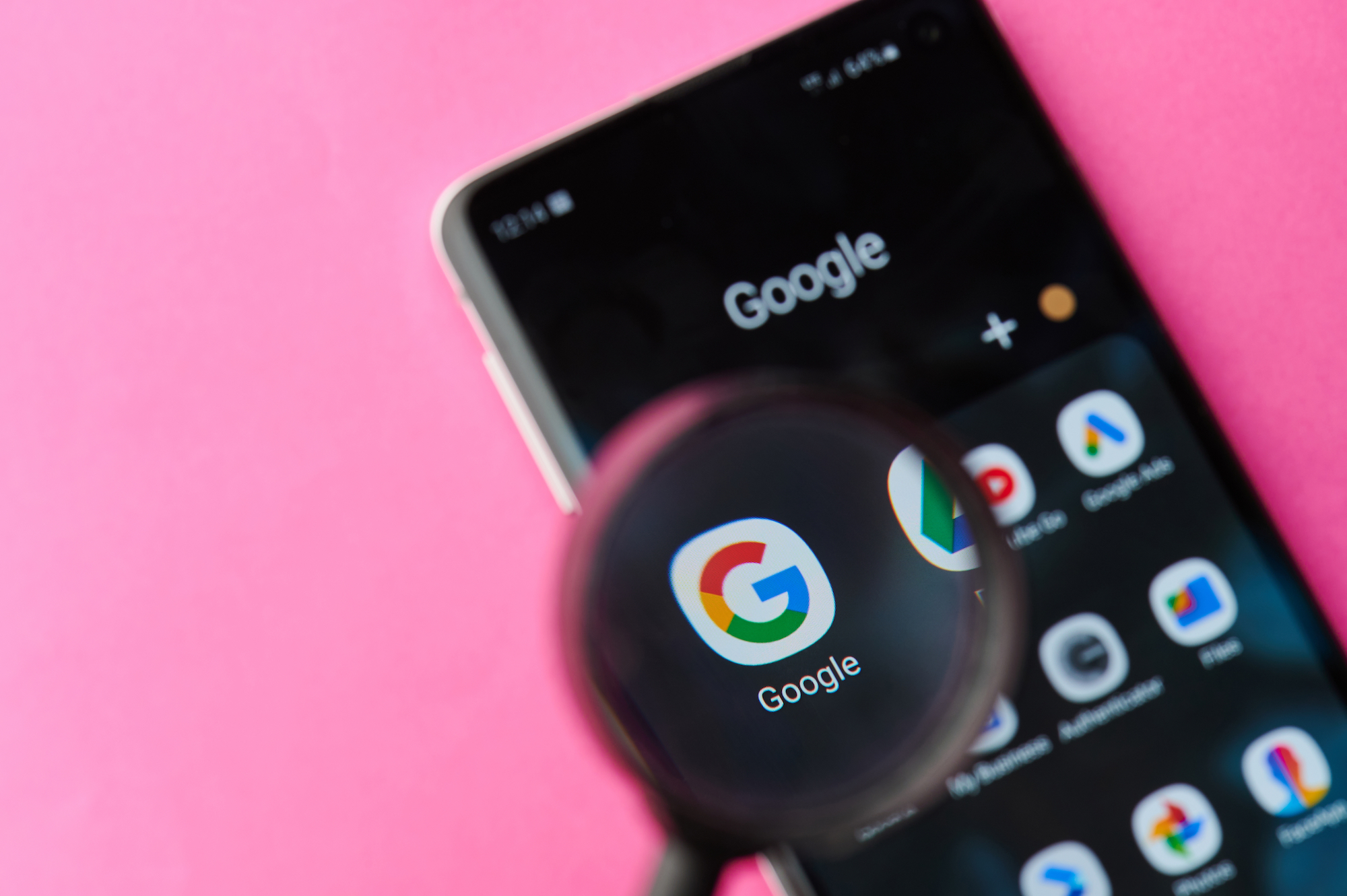Google posted a new YouTube Short, inviting more people to test Search Generative Experience through Search Labs.
Google SearchLiaison also announced on Twitter that Google had made several improvements to SGE over the past two weeks.
Two weeks ago, we started opening up access to SGE. Since then, we’ve made a number of quality updates, including a major improvement that reduces the time it takes to generate AI snapshots by half! We hope everyone testing it out enjoys the speedier experience. If you haven’t…
— Google SearchLiaison (@searchliaison) June 8, 2023
Here’s what I found while testing the new and improved Google SGE.
The Sources Were Not Always Complete
Did Google cite sources in generative AI overviews? Yes, but they were not always the complete list of sources.
One of the first questions I asked SGE almost two weeks ago was what is Google Bard. I asked it again, and the answer was credited to articles from four sources.
 Screenshot from Google, June 2023
Screenshot from Google, June 2023When I ran the text through Originality.ai, a portion of the text matched an article from PC Guide, which was not included in the list of sources from Google.
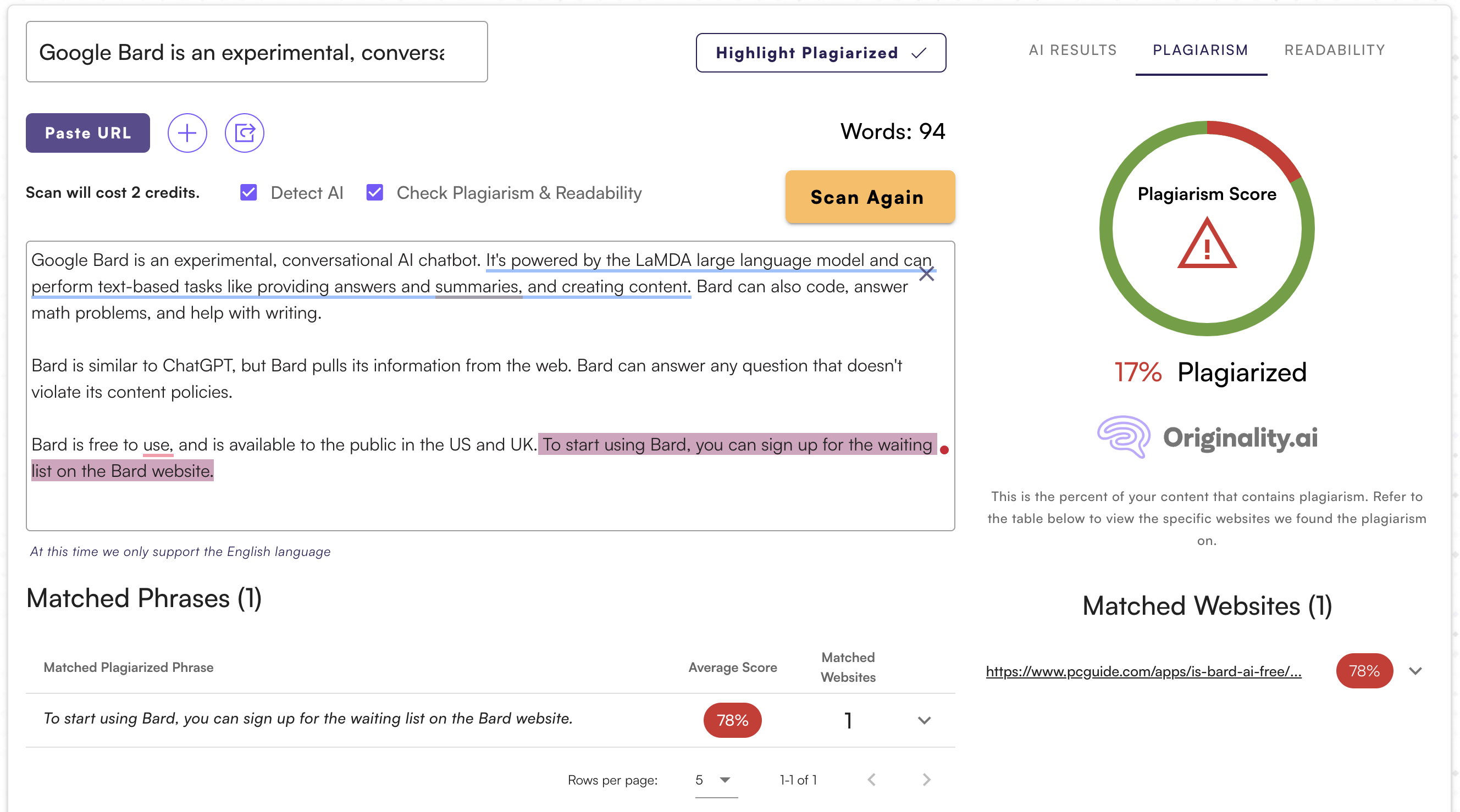 Screenshot from Originality, June 2023
Screenshot from Originality, June 2023A similar thing happened when I checked the AI overview for what is ChatGPT.
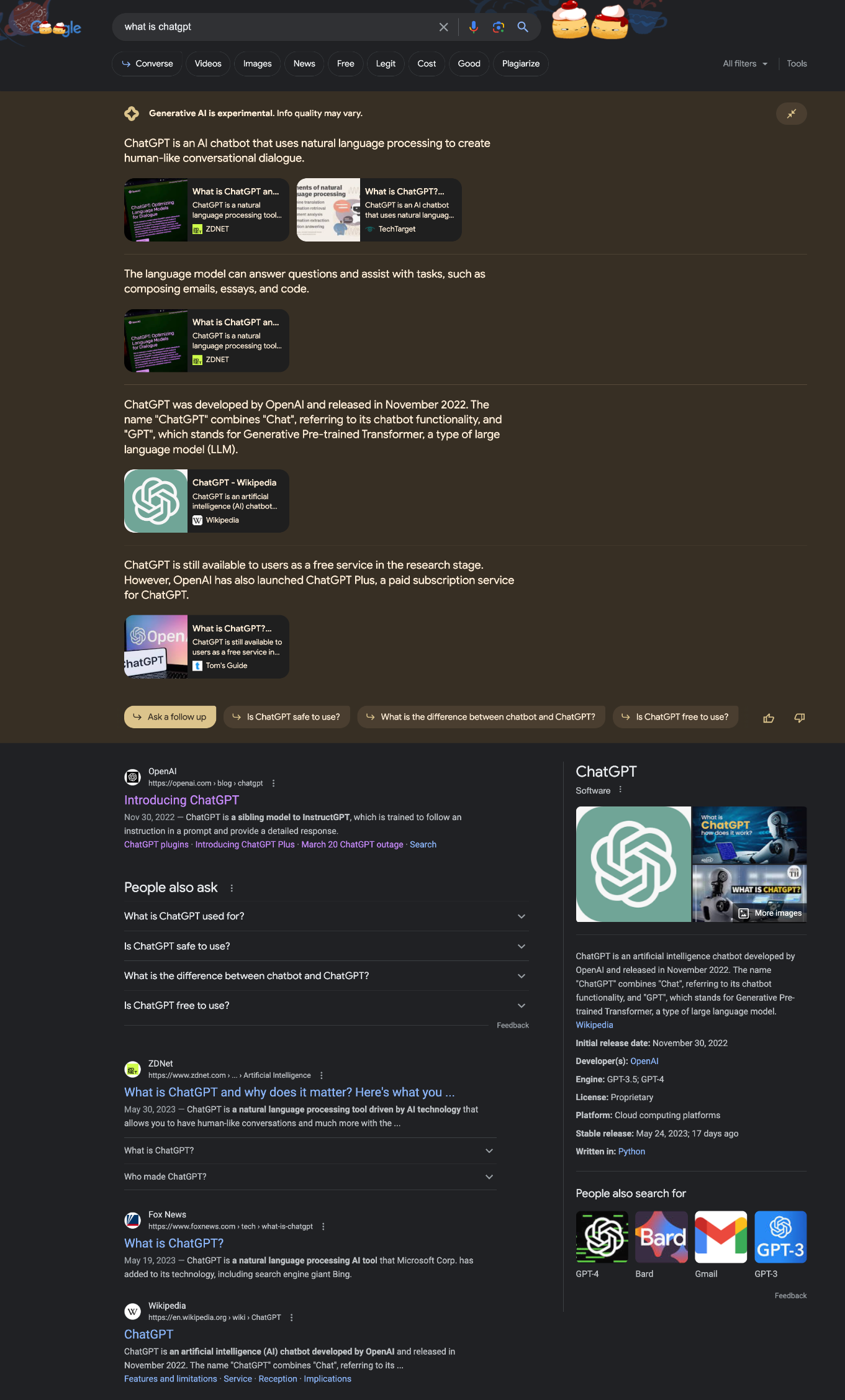 Screenshot from Google, June 2023
Screenshot from Google, June 2023Originality discovered sources not included by the generative AI text.
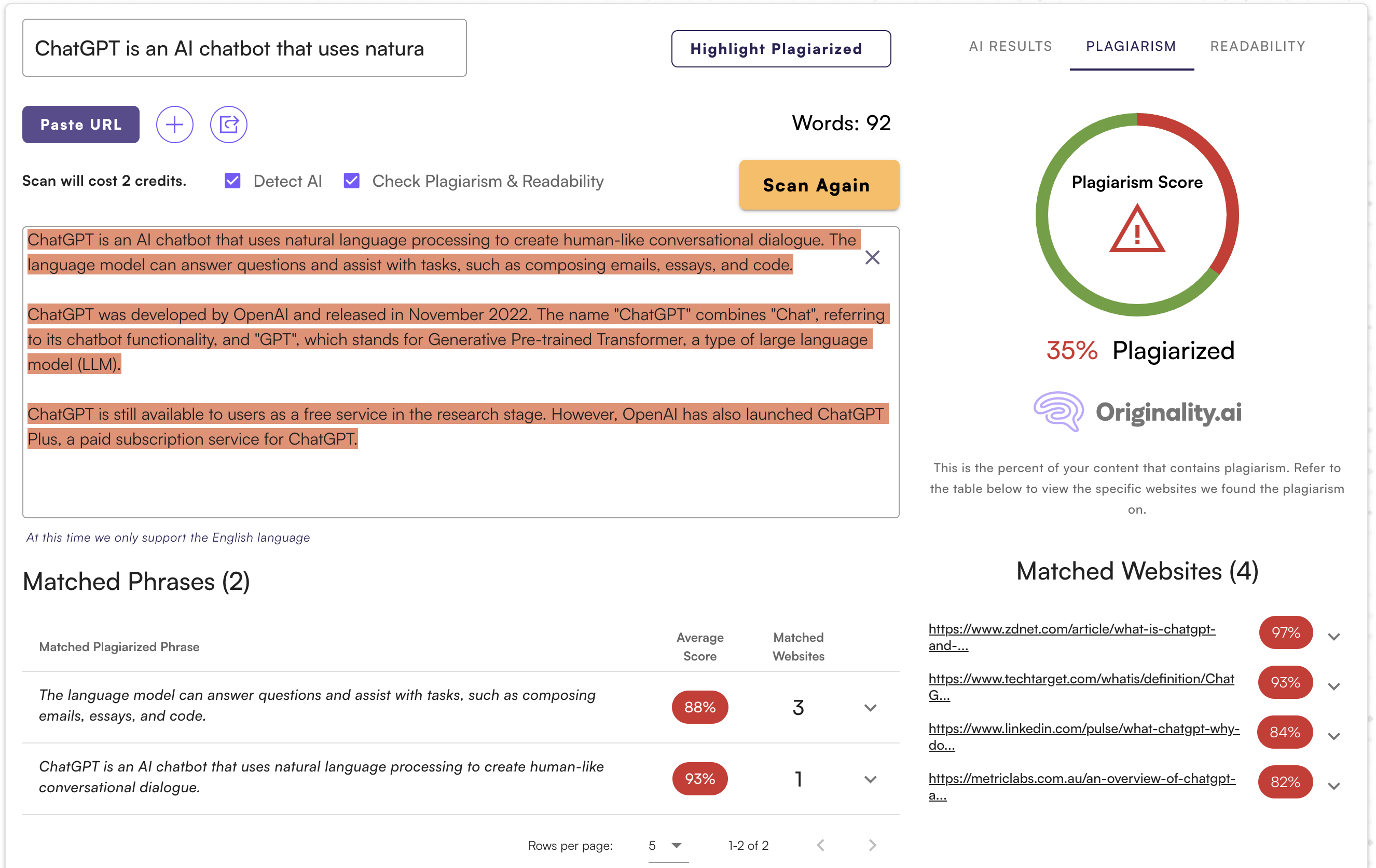 Screenshot from Originality, June 2023
Screenshot from Originality, June 2023There were also mismatched sources in the response to what is link building between what Google AI cited…
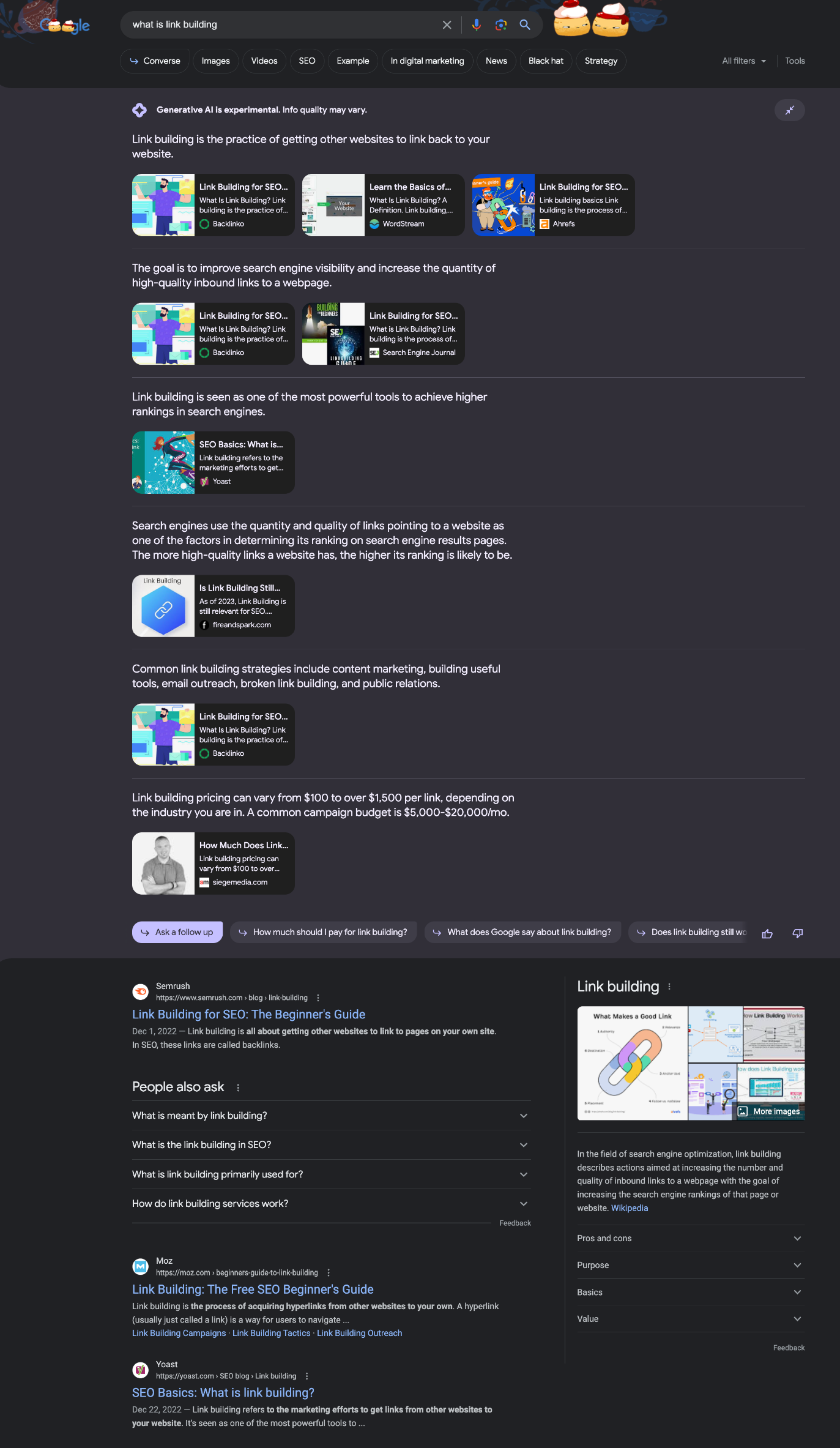 Screenshot from Google, June 2023
Screenshot from Google, June 2023…and what Originality detected.
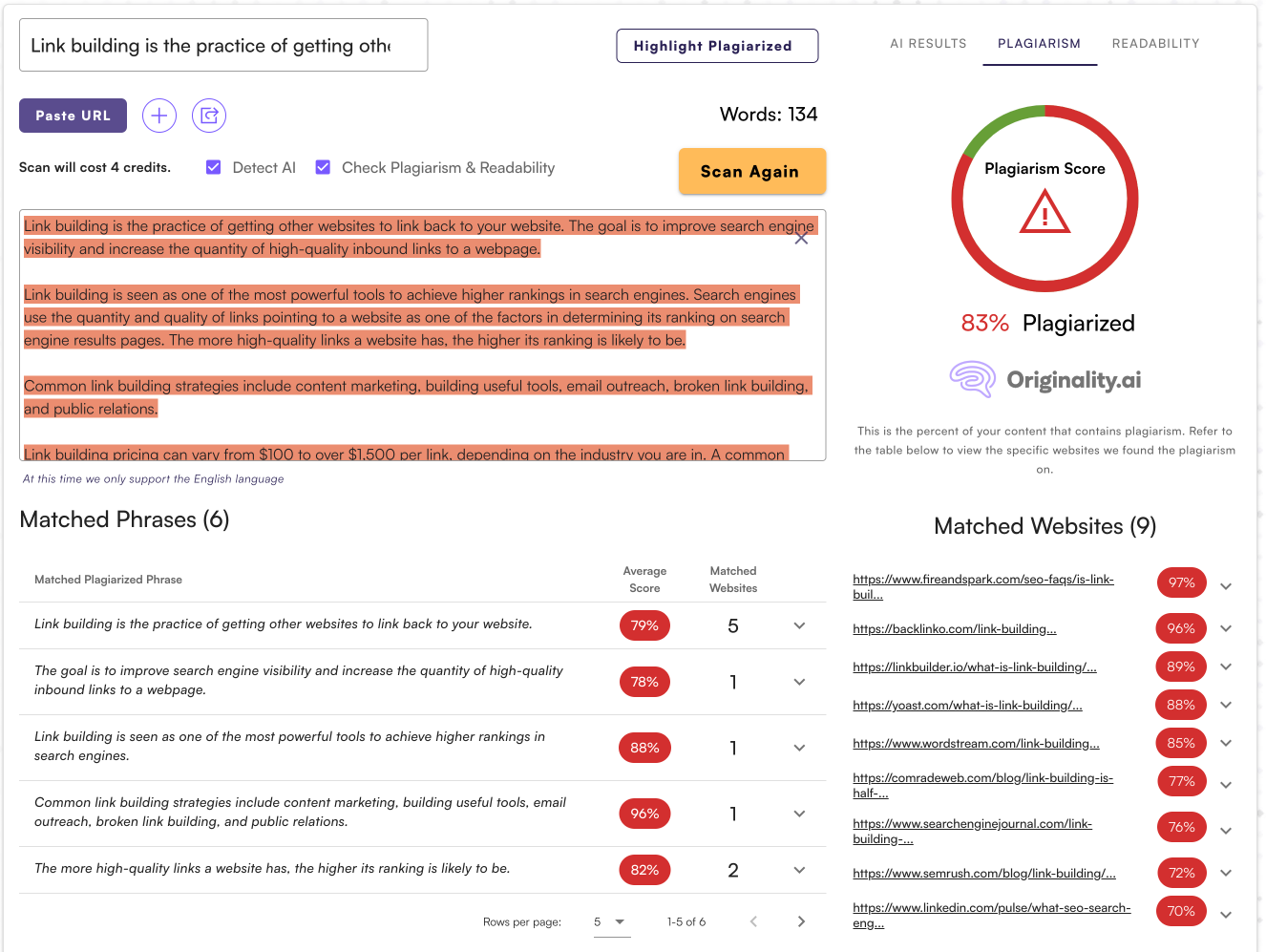 Screenshot from Originality, June 2023
Screenshot from Originality, June 2023This issue could be significant for uncredited authors and publishers in generative AI responses.
Sponsored Results Appeared Above Some SGE Responses
Instead of always appearing first, some SGE responses appeared below sponsored results from Google Ads.
It happened in this search for what are the best SEO courses.
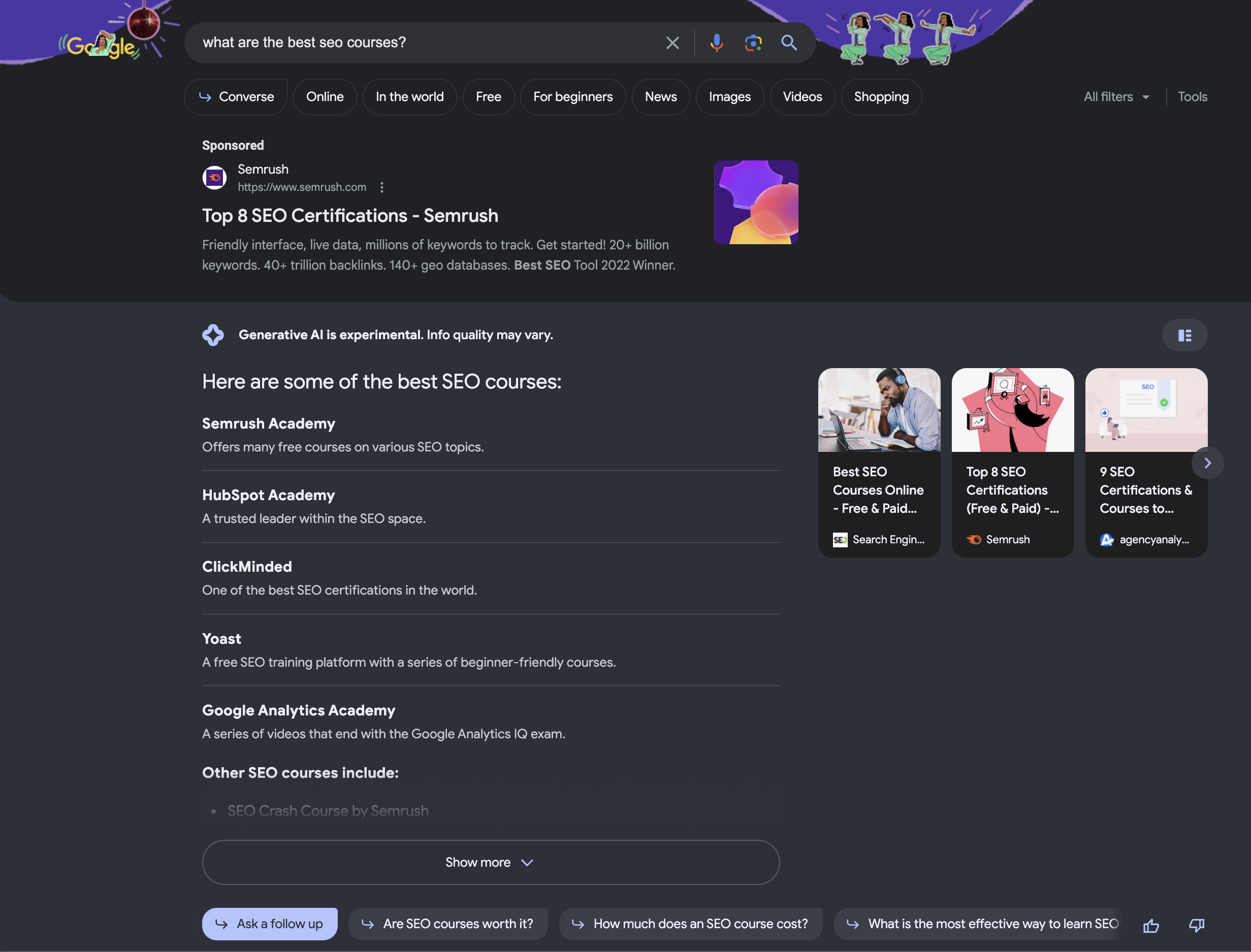 Screenshot from Google, June 2023
Screenshot from Google, June 2023This query for the best place to buy a laptop showed sponsored shopping results before the SGE response with local search results.
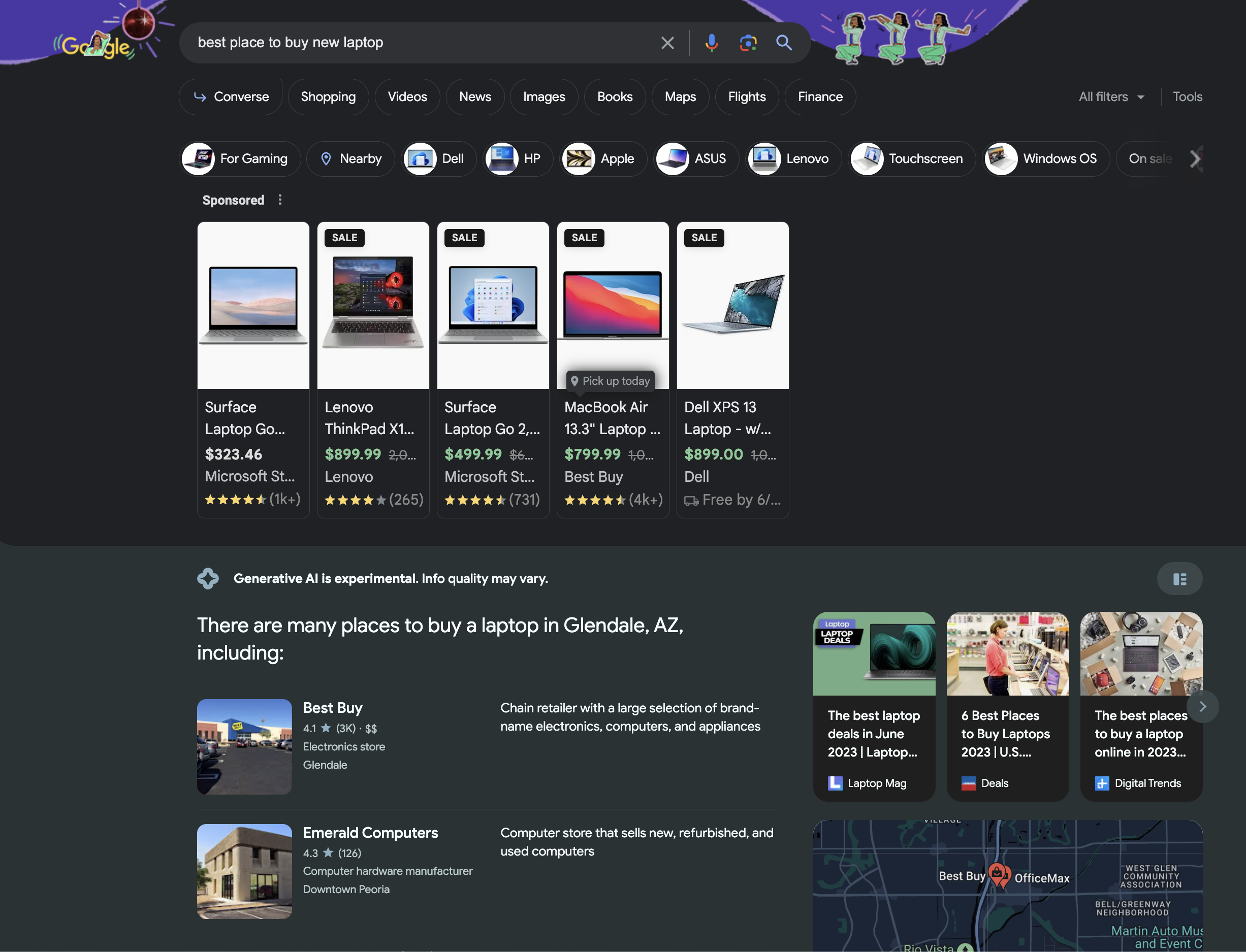 Screenshot from Google, June 2023
Screenshot from Google, June 2023More Brand Websites Appeared In Sources
When I first accessed Google SGE, most of its responses linked primarily to publisher websites. Now, some responses I received included links to official/branded resources.
For example, this search for Google Search Console included a Google Support source.
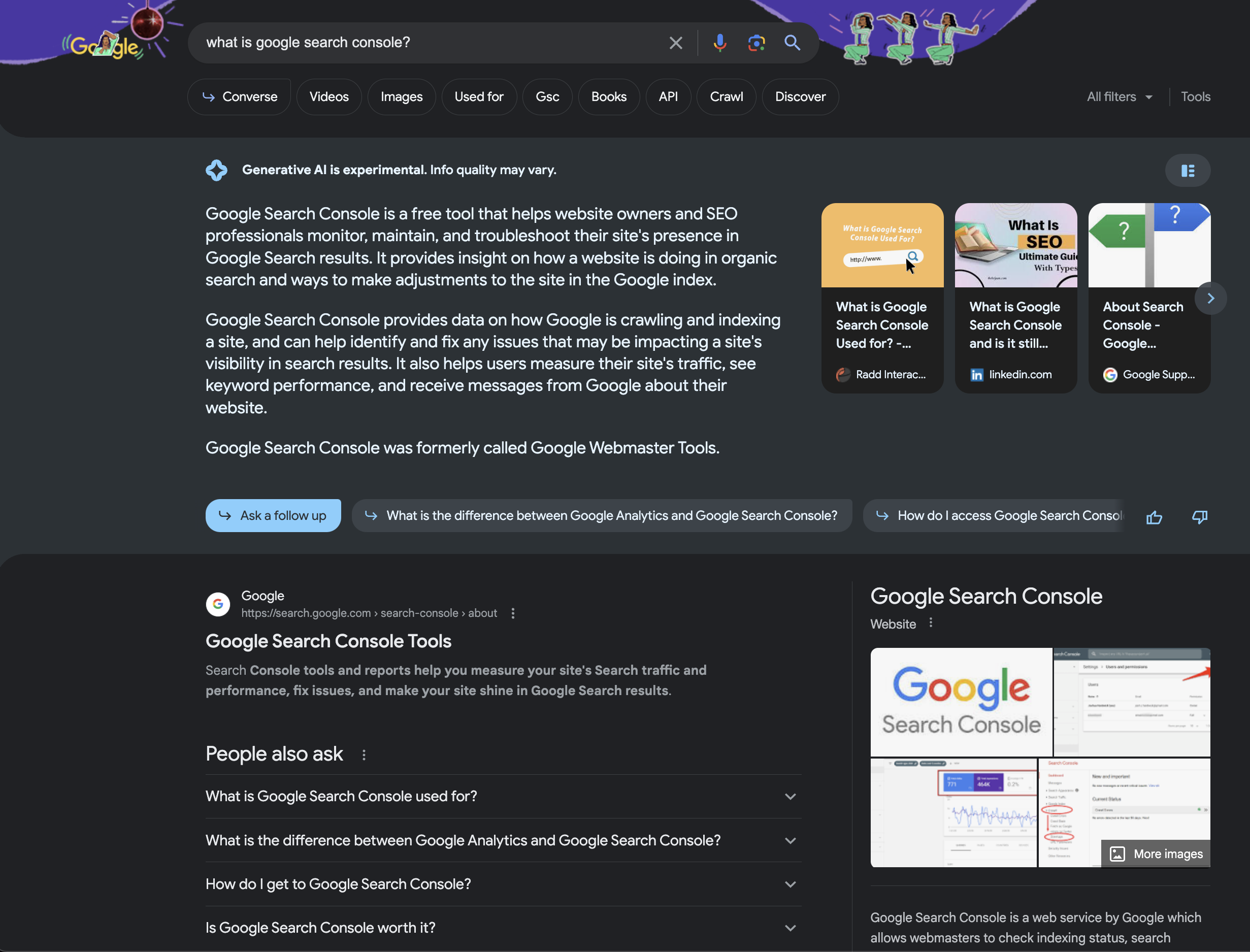 Screenshot from Google, June 2023
Screenshot from Google, June 2023When I inquired about the biggest announcements from WWDC 2023, the AI overview included a link to the Apple Vision Pro page.
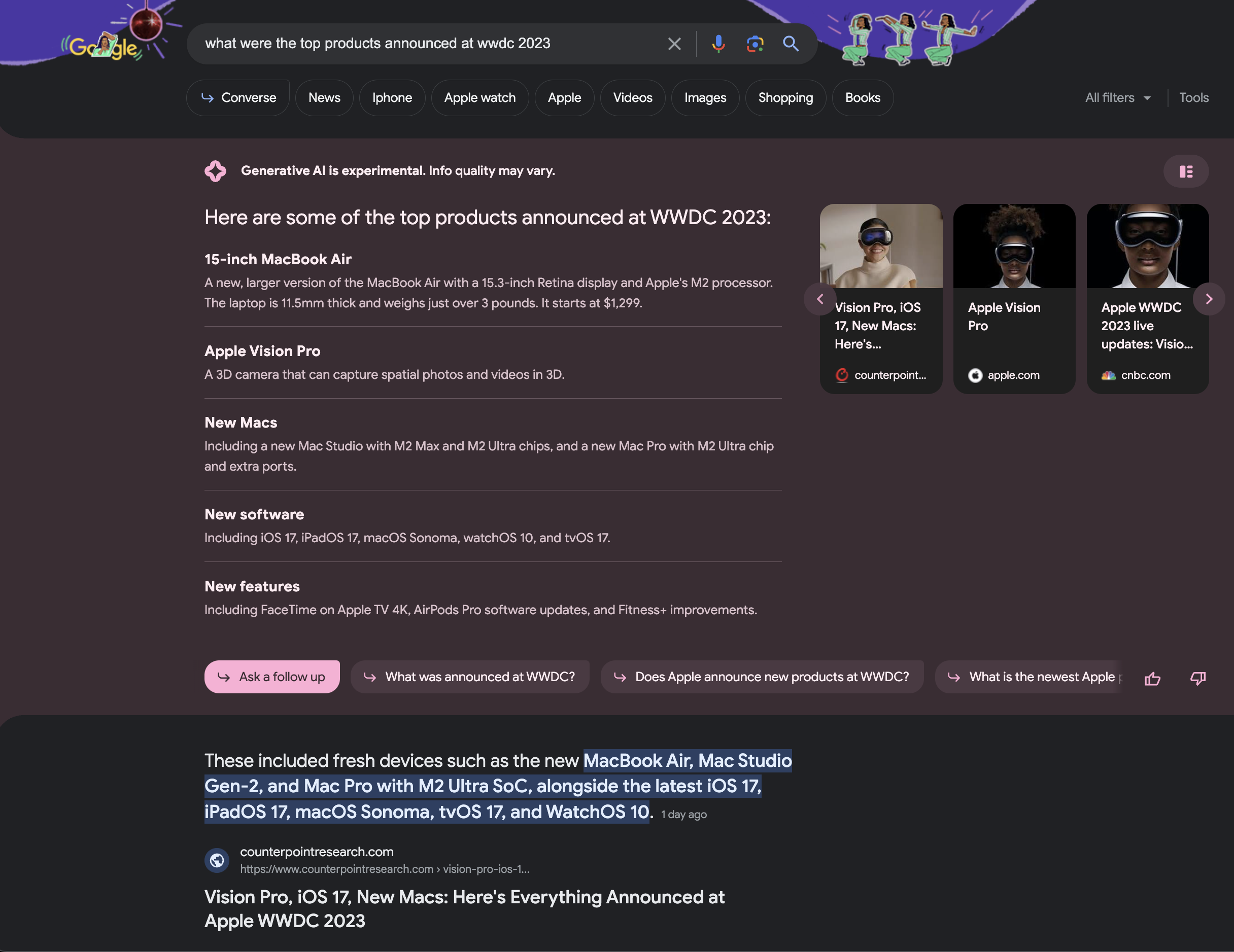 Screenshot from Google, June 2023
Screenshot from Google, June 2023I shopped for a robotic vacuum cleaner. The sources included links to two retailers and a manufacturer.
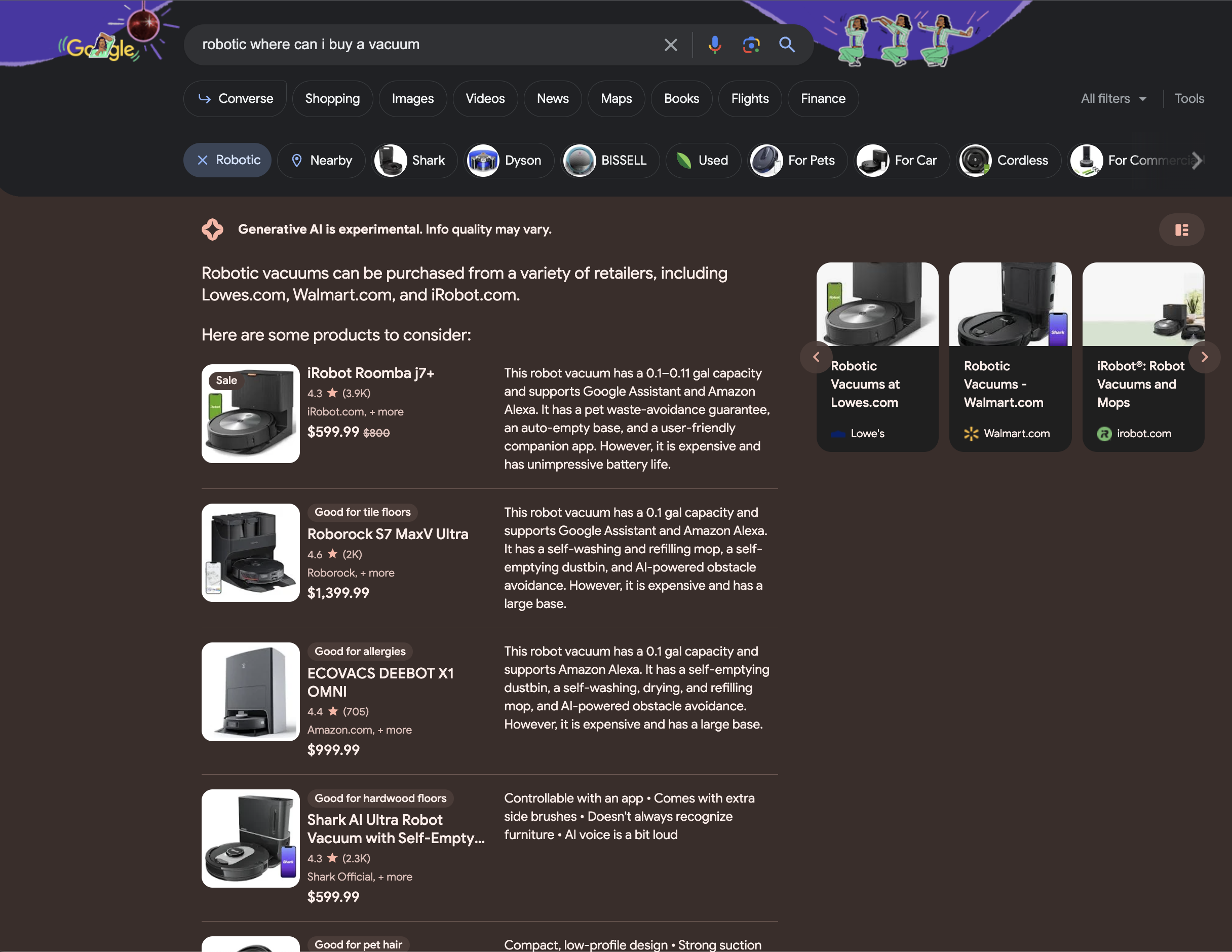 Screenshot from Google, June 2023
Screenshot from Google, June 2023Finally, I checked to see who the CEO of Microsoft was. Two links included in the response were Microsoft news links about Satya Nadella.
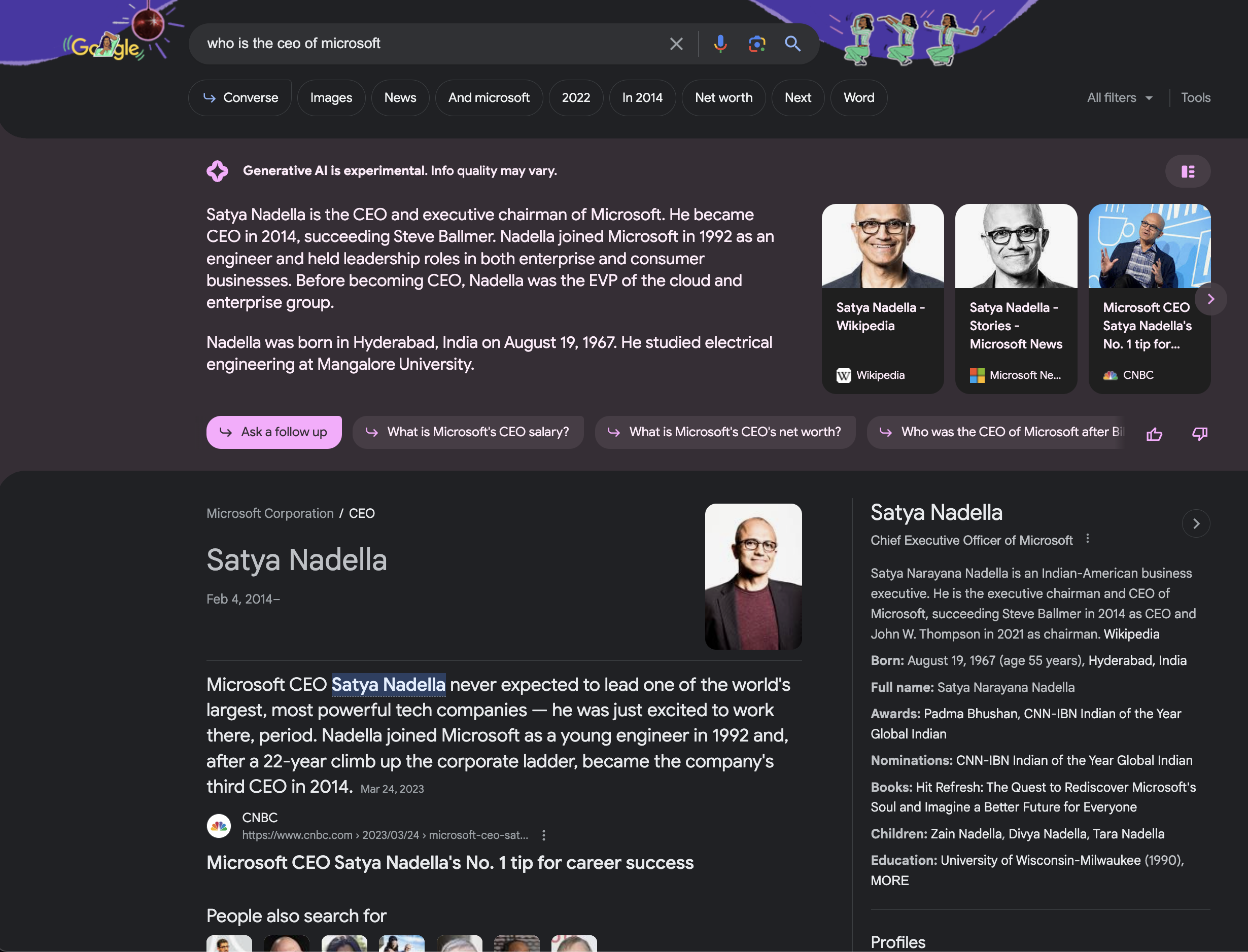 Screenshot from Google, June 2023
Screenshot from Google, June 2023More Social Media Appeared In Sources
In addition to including relevant brand websites in SGE responses, I noticed more social media results.
For example, I asked about the current Twitter API v2 pricing. One of the answer sources was a tweet.
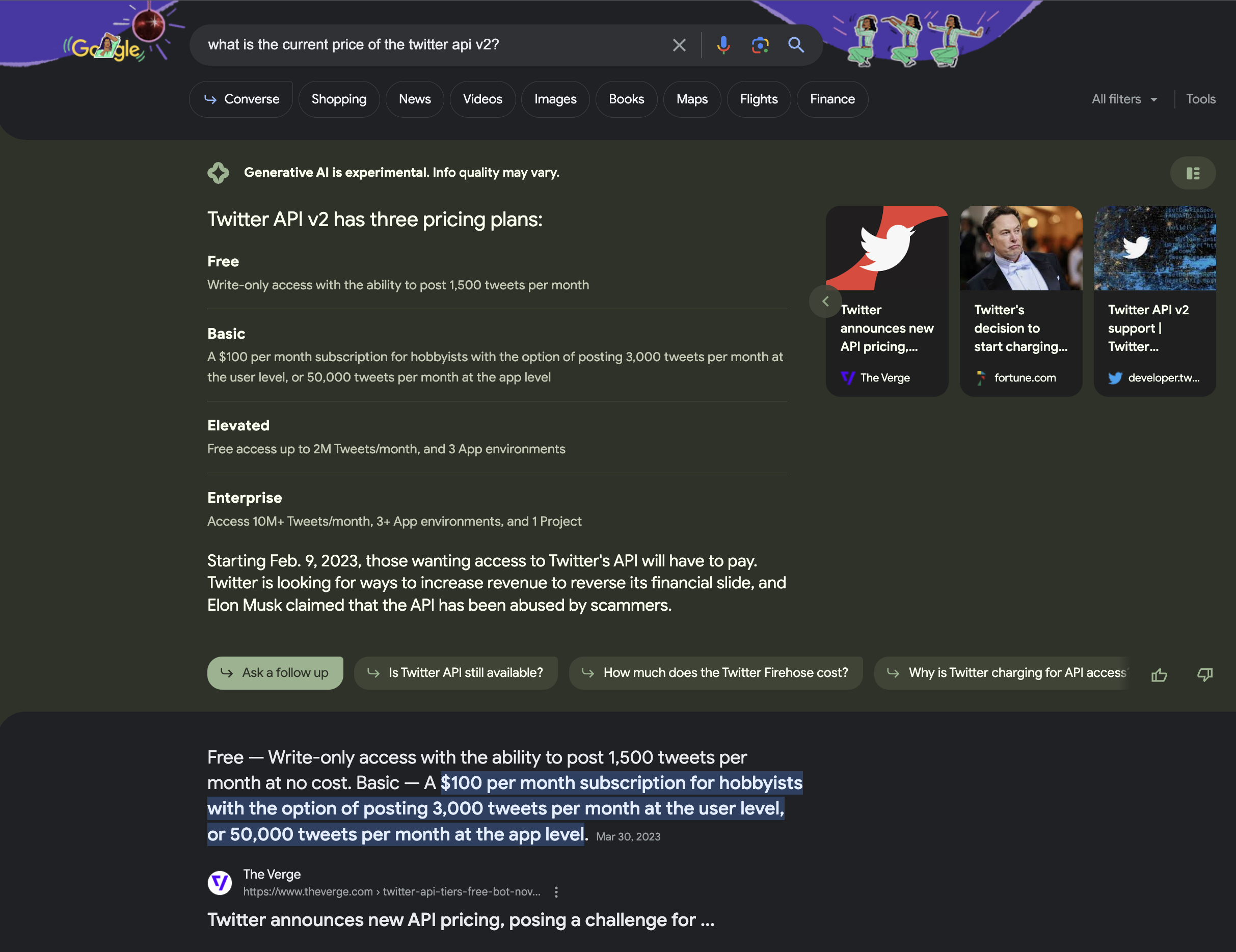 Screenshot from Google, June 2023
Screenshot from Google, June 2023I wanted to find out who the CTO of OpenAI was. The response included the LinkedIn profile for Mira Murati.
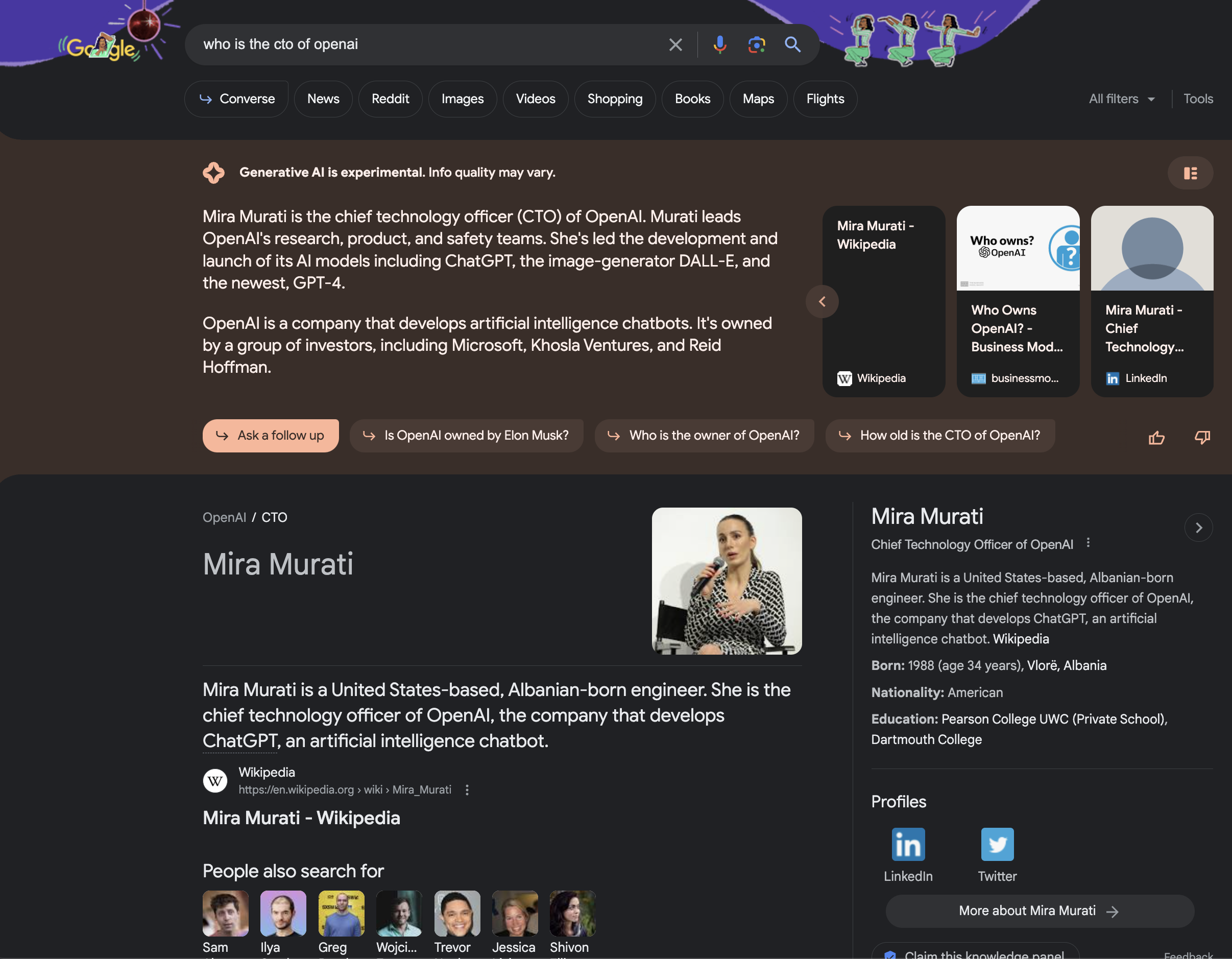 Screenshot from Google, June 2023
Screenshot from Google, June 2023I checked to see if Best Buy had customer support on social media. The sources included Best Buy’s Twitter and Instagram profiles.
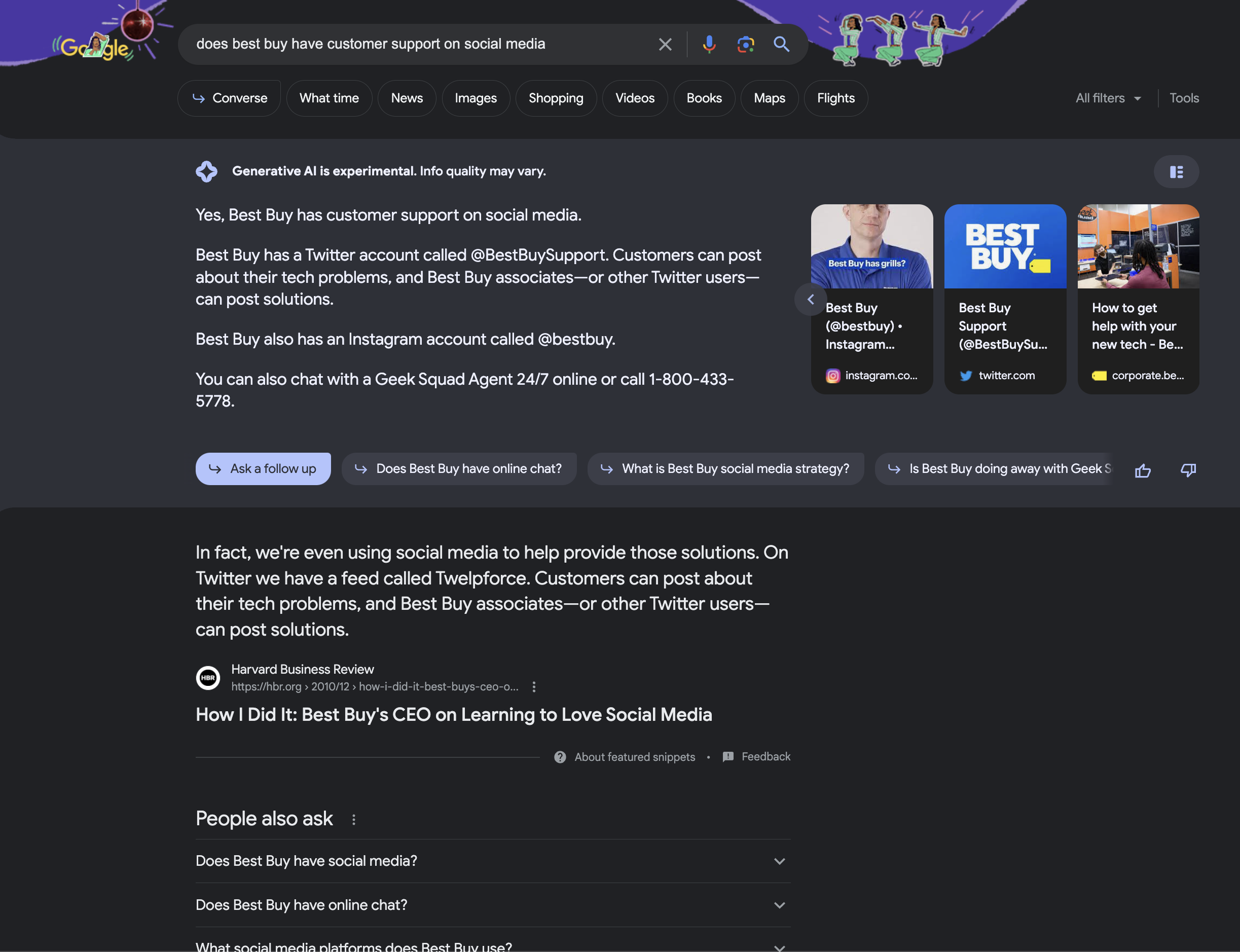 Screenshot from Google, June 2023
Screenshot from Google, June 2023The Speed Was About The Same
Unfortunately, I didn’t notice a significant difference in speed compared to the last time I tested SGE.
 Screenshot from Google, June 2023
Screenshot from Google, June 2023Overall, Google SGE responded quickly, even if there were some odd queries it couldn’t answer.
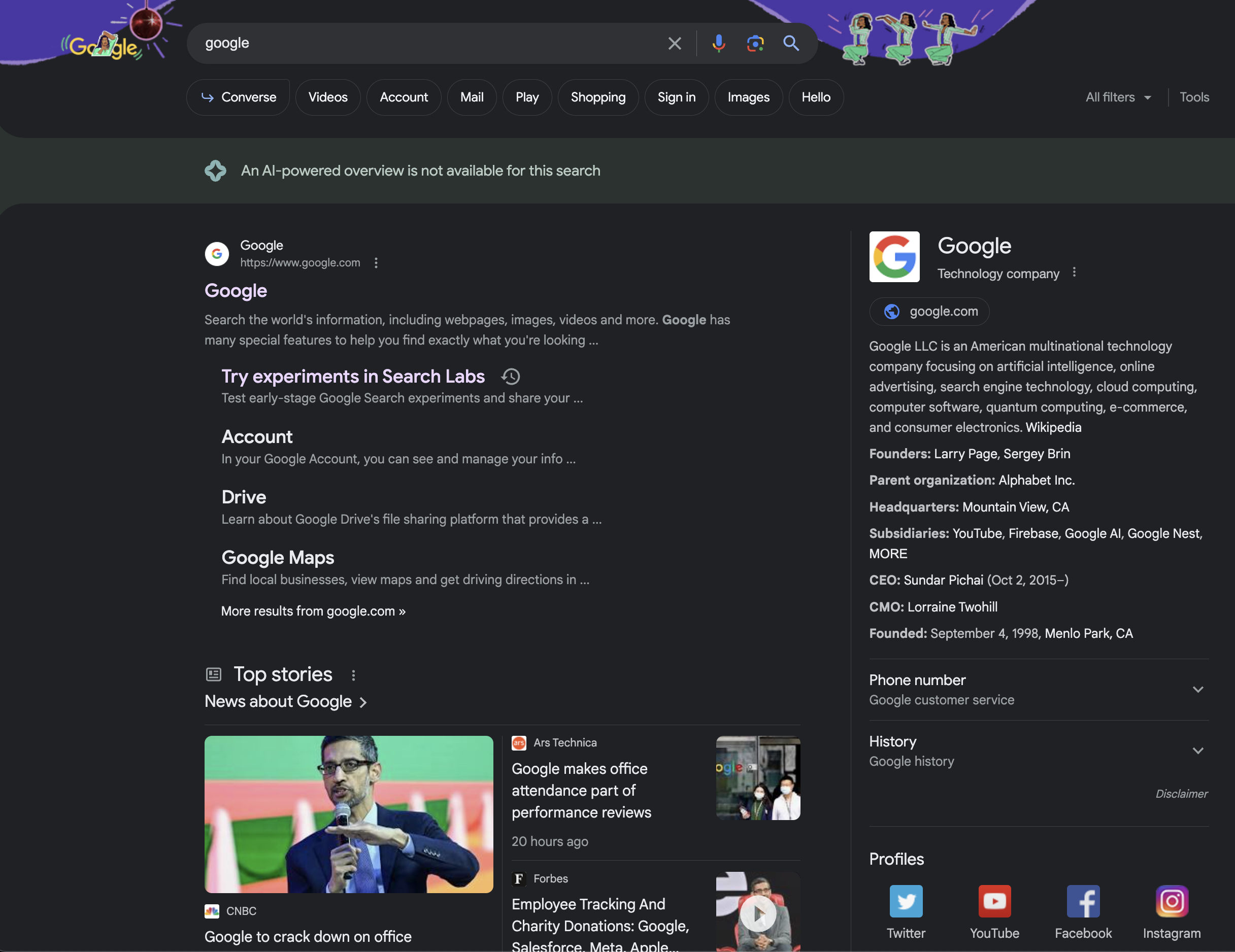 Screenshot from Google, June 2023
Screenshot from Google, June 2023Google SGE Continues To Improve
Google’s Search Generative Experience (SGE) will continue to evolve, expanding the scope and diversity of its source materials and indicating a more generative future for search experiences.
The shift from predominantly relying on publisher websites to including brand websites in the search results brings users a broader spectrum of information. It allows more direct access to information, helping consumers make better decisions.
The integration of social media as a source in SGE responses demonstrates Google’s recognition of the importance of these platforms in providing real-time, user-generated data to provide more relevant answers.
Including sponsored results above SGE responses isn’t entirely a surprise, considering Google’s continued emphasis on monetizing search results.
Despite these updates, accurate sources and the anticipated improvements in speed aren’t consistent across all searches, suggesting room for further optimization.
The future of Google SGE is one of ongoing transformation, striving to make search experiences more encompassing, engaging, and faster.
However, it remains to be seen how these changes will influence user experience in the long run and if the search giant will continue to strike a balance between delivering accurate results and maintaining a user-friendly experience.
Featured image: PixieMe/Shutterstock
